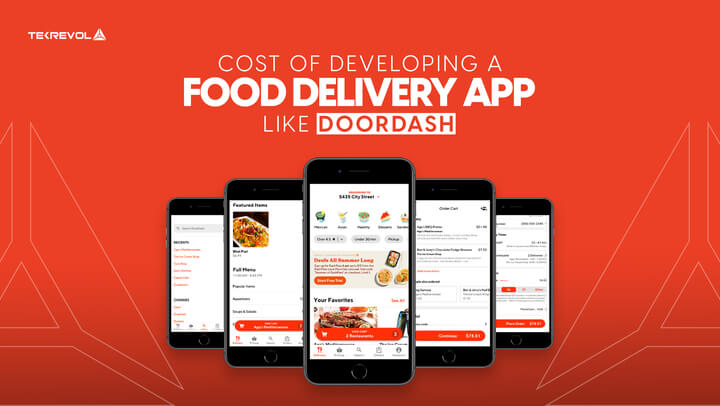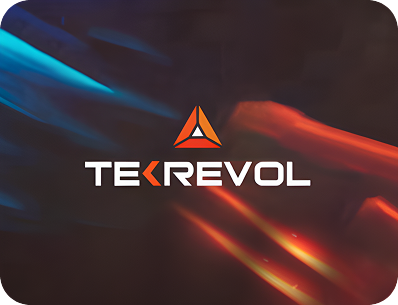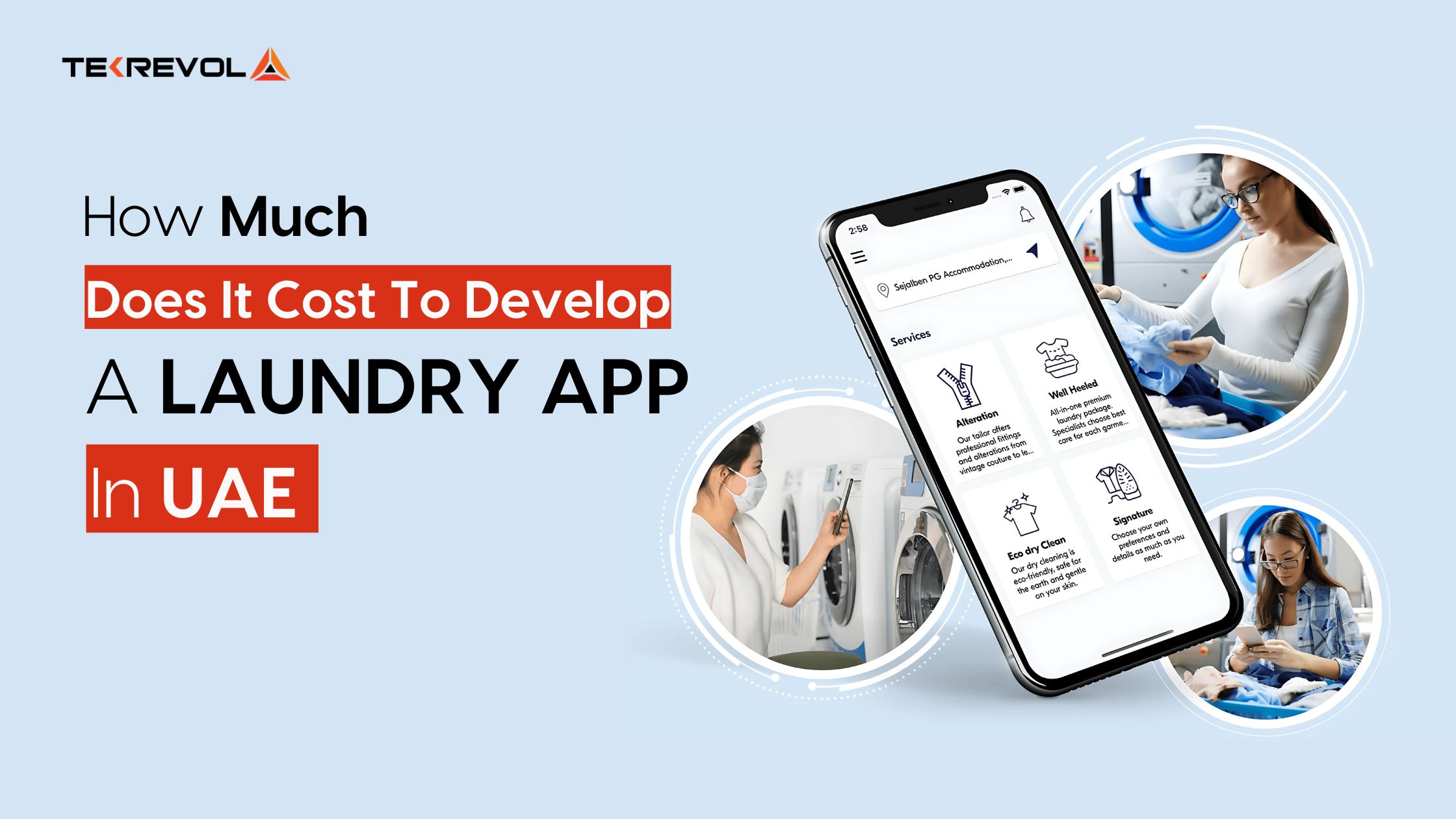According to Statista, the global online food delivery market is currently worth $130 billion. Moreover, the sector is expected to reach over 223.7 billion mark by 2027.
The digitization of the restaurant and food delivery business has brought forward various opportunities for companies to compete with the likes of Uber Eats, Zomato, and DoorDash.
If you want to learn how to make an app like DoorDash or Uber Eats, our business analysts have answered the first question that comes to mind:
How much does it cost to make an app like DoorDash?
To begin with, developing an app like DoorDash costs an average of $65,000. While this is a rough estimate, here is a more detailed breakdown of the cost of food delivery app development:
- A basic on-demand food delivery app costs between $30,000 to $50,000.
- A multi-feature on-demand food delivery tool similar to the DoorDash app costs between $52,000 – $100,000.
- A QSR (Quick Service Restaurant) app like McDonalds or Subway costs between $60,000 – $80,000.
- An advanced food delivery and marketplace app with high-end features costs $100,000 and above.
These are estimates, and several factors establish and affect the overall food delivery app development cost. Read the following sections to determine the factors and three ways to optimize your app development budget.

Factors Affecting the Cost of Food Delivery App Development
1. Scope and features
Putting it simply, the broader your app’s scope of work and the solutions it provides to your users’ problems, the higher the costs you’d incur. Each new feature you add to the UI and UX of the app increases the development effort and time, affecting the overall cost of your food delivery app development.
For a quick reference, here are the top 10 features of basic food delivery apps:
| App Features | Cost in USD ($) |
| a. Cuisine listings, sub-menus, and products | 2000 – 3000 |
| b. Search filters for pricing, delivery costs, and diverse cuisine options | 500 – 900 |
| c. Add to cart and order history | 1500 – 2500 |
| d. In-app messaging and chat support | 3500 – 4000 |
| e. Signup with 2FA | 1000 – 1300 |
| f. Sign in or order as guest options | 1200 – 2000 |
| g. Delivery tracking via live location | 2000 – 3000 |
| h. Online payment | 800 – 1500 |
| i. Push notifications | 1200 – 1500 |
| j. Reviews and ratings | 1000 – 1500 |
With these features, most business apps have CMS integration, admin panels, and analytics dashboards that cost between $15,000 – 25,000.
2. Development hours
The number of features, API integrations, and the technology stack decides how many hours an app will take for complete development, from discovery to deployment. For reference, here are the number of hours typical apps of different complexities take:
A basic food delivery app with simple order placement and tracking functionality takes an average of 500 development hours, falling between 350 to 650 hours.
A mid-level food delivery app with a mix of primary and advanced features takes an average of 800 development hours, falling between the 700 to 1000 hours range.
An advanced app with integration of emerging technologies like AI and ML, a fully-fledged chatbot, and 2-factor authentication takes an average of 1300 hours, falling anywhere between 1000 to 1500 hours.
These are the estimated numbers that go up or down depending on your project requirements, the development team approach, and the technology stack you choose.
3. The complexity of UI and UX design
Several factors add to the UI and UX of your app. Firstly, the platform you choose to launch your app on adds the first cost centers.
If you are developing for Android only, you’ll need 30 to 35 screen designs and code. Similarly, if you are only launching for iOS, you’ll need 30 to 35 designs. The cost significantly increases if you develop native apps for both Android and iOS.
Suppose you develop an app that works on Android and iOS but has similar functionality and a single codebase. In that case, your developer will choose Flutter app development, which has an intermediate cost lower than developing native apps. More on this in the technology stack.
Another factor that adds to your UI and UX cost is the overall design and branding of the app if you go for a minimal design with limited branding.
4. Hiring location
Your development team’s operating and business registration locations affect the hourly rates they charge for building your app. Their service and development fees reflect their local tax requirements and business costs.
For a quick reference, the UK, Australia, and Germany have the highest cost of digital product development. USA and MENA regions have medium costs, and you can find mid to expert-level developers under your budget. Regions like Ukraine, India, and Pakistan have the lowest development costs per hour.
5. Development tools and technology stack
Advanced apps require hefty development budgets because they use emerging technologies, AR and VR frameworks, expensive cloud for hosting, smart contracts, and machine learning algorithms that must be built from scratch.
With these tools, developers must also use different programming languages, development frameworks, and databases. Considering this, the platform you choose also affects the overall cost.
A native iOS app costs more than a native Android app. That’s because Swift is still emerging, and Swift developers charge more than Kotlin and Java developers. One native food delivery app would cost an average of $50,000.
A duo of 2 native apps, one for Android and the other for iOS, is the most expensive option. From a logical standpoint, this is like hiring two different development teams, one that works dedicated to Java or Kotlin and tests for the same, and the other builds on Swift and follows apparently similar proceedings. With launching costs covered, these two native apps will cost you around $100,000.
The third option is to launch a cross-platform food delivery app that performs similarly on Android and iOS. Many developers in cross-platform departments opt for Flutter app development for such apps. This is just like getting two apps for the price of one – and from a financial standpoint, this is the most economical option.
- For a precise estimate and technology stack you can use in your food delivery app, discuss your options with our
6. Stages of development
There are stages of technical development, starting from app discovery and proposal and including testing and maintenance. Here is a quick breakdown of the costs covering these stages of development:
Some app development teams also provide app maintenance services for 22% of the project cost. A mobile app development company usually charges an upfront fee for outsourcing the entire project or would work on a subscription model via staff augmentation arrangements. These estimates are good for appreneurs who tend to complete the development process periodically as different projects.7. App security and data privacy are users’ significant concerns. It is also an official approval factor in Google’s app publishing requirements. These concerns become all the more critical regarding a food delivery app. That’s because such apps:
- Store users’ personal and professional addresses,
- Register users via personally identifiable information like phone number and email address, and
- Process users’ financial information, e.g., credit card details.
Any compromise on data will affect the user experience and result in low user retention – two metrics vital for decent monetization. To ensure complete app privacy and security, your developer has to take specific actions during programming and testing. Firstly, the backend must have a secure code, free from bugs, crashes, and viruses. Secondly, your testing staff has to conduct ethical hacking assessments to ensure the app will counter hacking attempts. While security is essential for all apps, specialized procedures like penetration testing and end-to-end encryption come with a cost, depending on your developers and contract terms, anywhere between $1000 – $5000.How to develop a food delivery app under a budget
| Discovery stage | 2,000 – 5,000 USD |
| Design stage | 12,000 – 16,000 USD |
| Development | 25,000 – 65,000 USD |
| API integration | 5,000 – 8,000 USD |
| Testing | 8,000 – 15,000 USD |
| Launch | 500 – 1,000 USD |
Some app development teams also provide app maintenance services for 22% of the project cost.
An app development company usually charges an upfront fee for outsourcing the entire project or would work on a subscription model via staff augmentation arrangements.
These estimates are good for appreneurs who tend to complete the development process periodically as different projects.
7. App security
App security and data privacy are users’ significant concerns. It is also an official approval factor in Google’s app publishing requirements.
These concerns become all the more critical regarding a food delivery app. That’s because such apps:
- Store users’ personal and professional addresses,
- Register users via personally identifiable information like phone number and email address, and
- Process users’ financial information, e.g., credit card details.
Any compromise on data will affect the user experience and result in low user retention – two metrics vital for decent monetization.
To ensure complete app privacy and security, your developer has to take specific actions during programming and testing. Firstly, the backend must have a secure code, free from bugs, crashes, and viruses. Secondly, your testing staff has to conduct ethical hacking assessments to ensure the app will counter hacking attempts.
While security is essential for all apps, specialized procedures like penetration testing and end-to-end encryption come with a cost, depending on your developers and contract terms, anywhere between $1000 – $5000.
How to develop a food delivery app under a budget
1. Develop an MVP
An MVP, abbreviated for Minimum Viable Product, is a primary product with limited, core features and essential functions. While it offers basic operations, it does reflect the main functionality of an app. From a logical and financial standpoint, an MVP is a smaller version than the initially envisioned app and requires a smaller budget for development.
As a startup, you can launch your food delivery app’s MVP and monetize it. When cash flows become consistent, consider adding updates and scaling.
2. Choose cross-platform app development
While we have discussed how different operating systems and their respective guidelines require different development budgets, modern startups are leveraging this method to save on development costs, and you can do the same.
As a function of the cost, 42% of global software developers use Flutter for app development.
3. Reconsider your hiring options
Different app development companies offer more than one hiring model. They provide options like:
- Staff augmentation that works on a subscription model: you pick a team of professional developers and divide work into monthly, quarterly, or project milestones.
- Hourly development rates: more like a subscription model, your app development team will create a proposal and scope of work, divide it by the number of development hours, and charge your hours dedicated to your project.
- Project outsourcing: This is an upfront fee for the entire project that you can pay in installments.
While all of these hiring models cost the SAME in terms of finances, different breakdowns allow appreneurs and startups to arrange cashflows conveniently.
Wrapping up…
After deciding that you want to launch an app in the food delivery niche, getting custom quotes and cost estimates is a standard business move.
Moving ahead, know that the success of your technical venture lies in two factors: the correct execution of your business plan and the team that shares the same vision of capitalizing on the market gaps and creating a difference.
- Planning to build a food delivery app?
- TekRevol is your route to ready. Discuss your app’s features and get a development proposal and timeline within 48 hours!










